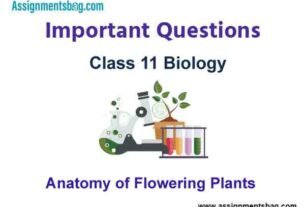Please see Chapter 2 Indian Economy (1950 – 1990) Case Study Questions and answers below. We have provided Case Study Questions for Class 11 Economics with answers for all chapters. Students should read the case study for Chapter 2 Indian Economy (1950 – 1990) which is an important chapter in Class 11 Economics and then attempt the questions provided below. Our teachers have provided answers too so that students can check their solutions.
Case Study Questions Chapter 2 Indian Economy (1950 – 1990)
Case Based Questions :
India which appears to have been pushed back to being the world’s 6th biggest economy in 2020, will again overtake the UK to become the 5th largest in 2025 and ace to the third spot by 2030 , A think tank said on Saturday . India had overtaken the UK in 2019 to become fifth largest economy in the world but has been relegated to 6th spot in 2020.
Question. Which of the following is referred as a think tank of planning in India.
(a) Niti ayog of India
(b) National Development Council
(c) NABARD
(d) IDBI
Answer
A
Question. The idea of five-year plans was borrowed from –—– ( Soviet union/ Denmark) .
Answer
Soviet union
Question. ———Finally approved the draft of Indian plans
(a) RBI
(b) National Development Council
(c) Ayush Ministry
(d) IDBI
Answer
B
The green revolution started in 1965 with the first introduction of HYV seeds in Indian agriculture this was coupled with better than efficient irrigation and the correct use of fertilisers to boost the crop. The end result of the green revolution was to make India selfsufficient when it came to food grains.
After 1947 India had to rebuild its economy. Over three- quarters of the population depended on agriculture in some way. But India was faced with several problems. Firstly the productivity of grains was very low and India was still monsoon dependent because of lack of education in at infrastructure.
There was also absence of modern technology. And India had previously faced severe famines during the British Raj who had only promoted cash crops instead of food crops. The idea was to never depend on any other country for food sufficiency.
So in 1965 the government with the help of Indian geneticists M.S. Swami Nathan, Known as the father of Green Revolution, launched the Green Revolution. The moment lasted from 1967 to 1978 and was a great success.
Question. Green Revolution is related with———-
(a) Modern technology
(b) Better irrigation facilities
(c) HYV seeds
(d) All of the above
Answer
D
Question. Britishers encouraged Indian farmers to grow food crops ( True/False).
Answer
False
Question. What was the need of revolution to make India———— Self-sufficient/ Modern.
Answer
Self – sufficient

